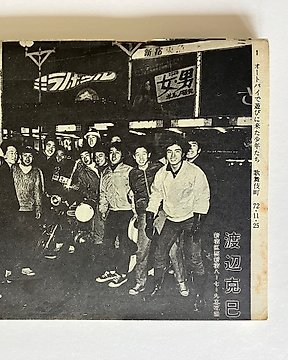
Katsumi Watanabe - Shinjuku gunto den 66/73 - 1973
No. 22411255

No. 22411255

About 1900 Glasgow publishers of miniature books David Bryce & Son issued a miniature edition of the Qu'ran (Koran) with illuminated opening pages,
2.5 x 1.9 cm.
It was sold with a metal locket and a magnifying glass. Many copies were supplied to Indian and other Muslim soldiers fighting for the British in World War I, and also served as talismans
"The production of miniature Korans in manuscript has a long tradition, but the printing of them in this [miniature] form had to await the arrival of photolithographic techniques in the late 19th century. Such Korans were published in Delhi in 1892 and Istanbul c. 1899, but the one which seems to have achieved the widest circulation is this Scottish edition. It was one of a long series of miniature books produced by David Bryce and Sons. All the copies were issued with metal lockets and magnifying glasses. Many were supplied to Indian and other Muslim soldiers fighting for the British in the First World War, and served also as talismans’ (Hanebutt-Benz, Glass, Roper (eds) Middle Eastern Languages and the Print Revolution: A cross-cultural encounter. A catalogue and companion to the Exhibition at Gutenberg-Museum Mainz,[2002] No. 79, p. 490).
An "almost legendary title published by Bryce … The bindings vary from richly gilt-stamped red or black morocco with gilt edges to plain stiff wrappers and yellow edges . . . (Bondy, Miniature Books [1981] 111–2).
In The Seven Pillars of Wisdom (Book 4, Chapter 53) T. E. Lawrence wrote:
"[Auda] told me later, in strict confidence, that thirteen years before he had bought an amulet Koran for one hundred and twenty pounds and had not since been wounded. . . . The book was a Glasgow reproduction, costing eighteen pence; but Auda’s deadliness did not let people laugh at his superstition."
How to buy on Catawiki
1. Discover something special
2. Place the top bid
3. Make a secure payment